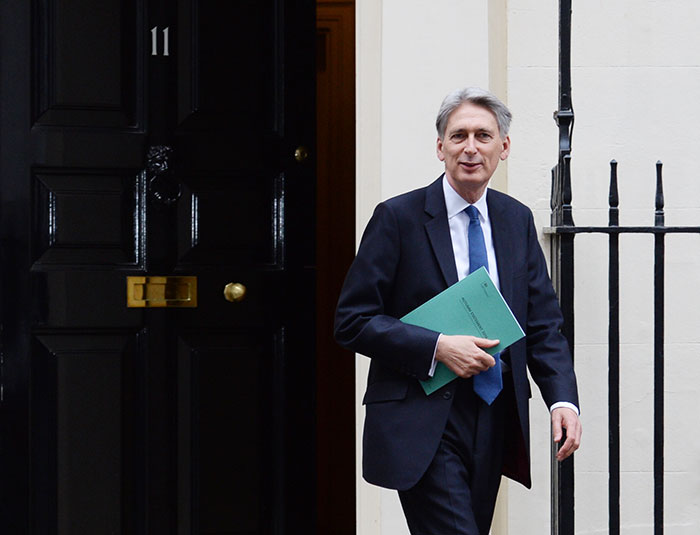
Photo: PA
The growth forecast for next year has been revised down significantly from the 2.2% predicted at the March Budget to 1.4%. In 2018, the OBR estimates growth to be 1.7%, down from the 2.1% predicted at the Budget.
Hammond told MPs this was driven by lower investment and weaker consumer demand resulting from sterling’s depreciation and the uncertain economic outlook.
“[Growth is] slower, of course, than we would wish, but still equivalent to the IMF’s forecast for Germany, and higher than the forecast for growth in many of our European neighbours, including France and Italy,” the chancellor said.
“While the OBR is clear that it cannot predict the deal the UK will strike with the EU, its current view is that the referendum decision means that potential growth over the forecast period is 2.4 percentage points lower than would otherwise have been the case.”
However, the growth forecast for the current year has been revised up slightly, to 2.1% from the 2.0% predicted in the spring.
In its Economic and fiscal outlook report, the OBR said the government had provided it with little information as to the nature of Brexit.
“[We are] little the wiser as regards the choices and trade offs that the government might make during the negotiations which will depend in part of course on the approach taken by those with whom it is negotiating,” the OBR stated
“Given this and the considerable uncertainty surrounding the economic and fiscal implications of different outcomes we have not attempted to predict the end point of the negotiations.”
Instead, it had made a series of assumptions to help inform its forecasts. These are: that the UK will leave the EU in April 2019; that EU payments will be recycled fully into domestic spending; and that there will be no significant changes to tax systems where there are common EU rules, such as VAT and the emissions trading scheme.
These assumptions will be kept under review as Brexit talks proceed, the OBR said.
On the fiscal outlook, Hammond said borrowing was likely to hit £68.2bn this year (equivalent to 3.5% of GDP), and then go on falling, reaching £17.2bn (0.7% of GDP) in 2021-22.
“This will be the lowest deficit as a share of GDP in two decades,” he told MPs.
However, debt will continue to climb, rising from 84.2% of GDP last year to 87.3% this year, peaking at 90.2% in 2017-18, before starting to fall.
“Stripping out the effects of the Bank of England interventions, underlying debt peaks this year at 82.4% of GDP and falls thereafter to 77.7% by 2021-22,” Hammond added.
Responding to the figures, the Social Market Foundation chief economist Nida Broughton said the borrowing forecast has deteriorated since March. The OBR also ascribes £59bn of extra borrowing over the next five years to changes related to the UK’s exit from the EU, she highlighted.
“Forecasting five years ahead is always very difficult. It’s even more uncertain this time round because we don’t yet know what the outcome of EU negotiations and future policy will be, and neither does the OBR,” she stated.
“For instance, the OBR has not yet costed in key policy ambitions like reducing migration to the tens of thousands – which would weaken the public finances. We also know little about what our future trade agreements will look like. With uncertainty ahead, Philip Hammond is wise to give himself more flexibility in his targets to repair the public finances.”



















